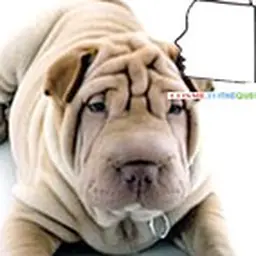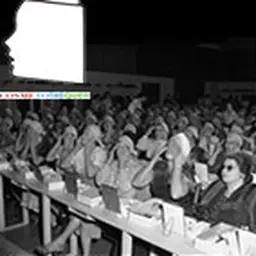![Par Xvazquez (Travail personnel) [CC-BY-SA-3.0 (http://creativecommons.org/licenses/by-sa/3.0) ou GFDL (http://www.gnu.org/copyleft/fdl.html)], via Wikimedia Commons](https://d2aabgjce9enf.cloudfront.net/main/media/content/5/5/55b47c064570b73285696cf00e7203d6ab77a89b--md-noborder.webp)
Boron is a chemical element of symbol B and atomic number 5. It is a trivalent metalloid. It is rather rare in the Earth's crust and solar system, but more abundant on the Earth's surface, especially as borax, due to the high solubility of borates. It constitutes about 0.001% of the earth's crust, or 10 ppm on average (or 5 mg/kg in basalts).
History: Boron compounds (Arabic بورق - buraq, Persian burah"brilliant"), have been known for thousands of years. In ancient Egypt, the mummification process depended on natron, an ore containing borates and other more common salts. The Chinese had used borax clay since -300 BC and the Romans used boron compounds to make glass.
This element was only isolated in 1808 by Sir Humphry Davy, Gay-Lussac and Baron Louis Jacques Thénard, who obtained a purity of 50%. However, they did not identify the substance as an element. It was Jöns Jacob Berzélius, the same man who isolated silicon, who in 1824 identified boron as an element. The first sample of pure boron was obtained by the American chemist W. Weintraub in 1909.
There are two allotropic varieties of boron in the single body state: amorphous boron which is a brown powder, while metallic boron is black. Boron metal is hard and has low electrical conductivity at room temperature. It is of great interest both for the variety of its compounds, for the progress it has made possible in understanding chemical bonding, and for its industrial and technological importance. It is used mainly as sodium perborate Na2B2O4(OH)4 in detergents and detergents and as borax, Na2B4O7-10H2O.
Boron is not found in nature in its elemental form, but in combined form in borax (tinkalite), boric acid, colemanite, kernite, ulexite and various borates. Boric acid is sometimes found in volcanic water sources. Ulexite is a boron ore that naturally possesses the properties of optical fibre.
The main marketed or industrially used boron derivatives are to date: - Disodium salts: Sodium borate (or anhydrous borax; sodium diborate; sodium tetraborate) ; n°CAS : 1330-43-4. - Trimethyl borate (or trimethyl boric acid ester ; UN2416) ; n°CAS : 121-43-7. - Boron oxide (or boron sesquioxide ; boron trioxide ; diboron trioxide) ; n°CAS : 303-86-2. - Boron tribromide (or Boron bromide ; UN2692) ; n°CAS : 10294-33-4. - Boron trichloride (or Boron chloride ; UN1741) ; n°CAS : 10294-34-5. - Boron trifluoride (or Boron fluoride, UN1008) ; n°CAS : 7637-07-2. - Boron trifluoride (etherate) ; n°CAS : 109-63-7. - Sodium borohydride (or sodium tetrahydroborate ; UN1426) ; n°CAS : 16940-66-2. - Decaborane (or UN1868) ; n°CAS : 17702-41-9. - Diborane (or Boroethane ; boron hydride ; diboron hexahydride ; UN1911) ; n°CAS : 19287-45-7. - Pentaborane (UN1380) ; n°CAS : 19624-22-7. - Sodium perborate (or sodium peroxyborate ; sodium peroxoborate) ; n°CAS : 7632-04-4. - Sodium tetraborate, decahydrate (or sodium biborate ; sodium diborate decahydrate ; sodium pyroborate ; sodium pyroborate decahydrate ; sodium tetraborate ; borax) ; n°CAS : 1303-96-4. - Triethylborane ; n°CAS : 97-94-9.
The main applications are: - The most economically important boron compound is sodium borax or tetraborate (Na2B4O7-5H2O). - For the green colour it gives in the flame,"amorphous" boron is used in pyrotechnic effects. - Boric acid is an important compound in some textile products. - Boric acid and its salts have been widely used in medicine as biocidal drugs, but are gradually being replaced by safer alternatives. Boron salts or boric acid have also been used as a fungicide and flame retardant for wood, then for cellulose wadding with the supposed advantage of low toxicity to humans. After it was found in the 19th century that a mixture of three parts boric acid and one part borax seemed to make a very effective preservative for milk, butter or meat products, it was used by some industries as a food preservative until deadly or serious poisonings reversed these practices and banned it in the United States, France, Germany, the Netherlands, Italy and Spain and later in Britain. Boricized milk in particular has caused severe intestinal disorders in infants. - Natural or 10B enriched boron is used, in the form of boric acid diluted in water, as a neutron absorbent in pressurized water nuclear reactors. It also acts as a shield against neutron radiation and in neutron detectors. - Various lipid-lowering, anti-inflammatory or anti-cancer agents were proposed and/or developed in the 1970s-1980s, but most of these compounds were also considered highly toxic. - Boron compounds are used in organic synthesis and to produce borosilicate glasses such as Pyrex. - Some boron salts have long been used as insecticide and poison control pesticides, ovicide and larvicide. - Boric acid, sodium borate, boric water and boric hydrogen peroxide have been used as medicines, for example for the deep treatment of certain wounds, following a scientific article in 1990. - It is found in alloy with iron and neodymium (Nd2Fe14B) in powerful permanent magnets. - In metallurgy, boron reinforces the resistance of grain joints. The combination of boron and titanium (the so-called titanium-boron pair) in steels has a significant influence on their mechanical properties. The dosage must be very precise, some processing standards prohibit boron concentrations above 0.0005% (by mass). - Boron compounds are studied for a very large number of applications such as in sugar permeable membranes, carbohydrate sensors. - In the semiconductor industry, boron is an acceptor dopant (P-type), particularly in silicon. - Diborane is an ergol studied in the field of astronautics for its high specific pulse with oxygen fluoride.
In cosmetic products, it has been used mainly as boric acid or borax. More recently, it is used as boron nitride.
| Contribution made by Jean Claude Le Joliff Trained as a biologist, Jean Claude Le Joliff was an R&D man for many years. Successively in charge of R&D, then Research and Innovation in a large French cosmetics and luxury group, and after an experience of creating a research centre (CERIES), he turned to innovation management. He has also been an Associate Professor at the University of Versailles Saint Quentin (UVSQ) and remains a lecturer in several specialized courses: ISIPCA, IPIL, ITECH, UBS, UCO, SFC etc. He is the founder of inn2c, an R&D and Innovation consulting company. Consultant for several international companies, he has actively participated in projects such as Filorga, Aïny, Fareva, and many others. He created the Cosmétothèque®, the industry's first conservatory of crafts and know-how. |












